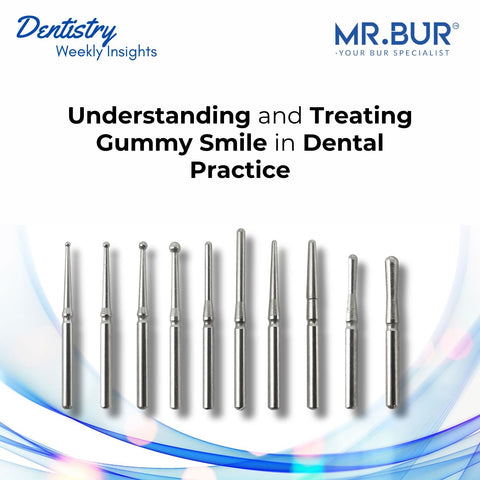Bite issues, or malocclusions, are dental misalignments affecting jaw function, aesthetics, and oral health. Recognizing and addressing these issues promptly is crucial for optimal patient outcomes. This article provides a thorough overview for dental professionals by examining the eight main types of bite disorders, their causes, diagnostic techniques, and available treatments.
What is Malocclusion?
Malocclusion refers to the misalignment between the teeth of the upper and lower jaws when the mouth is closed. While some malocclusions are purely aesthetic, others can lead to serious complications affecting chewing, speech, and oral health.
Importance of Early Diagnosis and Treatment
Prompt identification and intervention can prevent further dental complications, minimize treatment duration, and reduce costs. An accurate diagnosis is essential to develop effective, patient-tailored treatment plans.
The 8 Types of Bite Issues
1. Overbite
An overbite occurs when the upper teeth excessively overlap the lower teeth. This issue is often due to genetic factors or early childhood habits like thumb-sucking or prolonged pacifier use. Overbites can cause increased wear on the lower teeth, jaw discomfort, and challenges with chewing and speaking.
2. Underbite
An underbite is characterized by the lower teeth extending past the upper teeth, which is commonly due to hereditary jaw growth patterns. Underbites often result in jaw pain, aesthetic concerns, and bite functionality issues.
3. Crossbite
In cases of crossbite, one or more upper teeth fall behind the lower teeth when biting down. Crossbites can affect either the front or back teeth (anterior or posterior crossbite) and may lead to uneven jaw growth, tooth wear, and an elevated risk of periodontal problems.
4. Open Bite
An open bite presents as a gap between the upper and lower teeth when the mouth is closed, preventing the teeth from meeting. This condition is often linked to habits like thumb-sucking, prolonged pacifier use, or tongue-thrusting. Open bites can result in speech difficulties, inefficient chewing, and increased tooth wear.
5. Overjet
An overjet occurs when the upper front teeth protrude outward, away from the lower teeth. Typically caused by genetics or early habits like thumb-sucking, overjets increase the risk of trauma to protruding teeth and make it challenging to close the lips fully over the teeth.
6. Crowding
Crowding occurs when there is insufficient space in the jaw, leading to overlapping or twisted teeth. It often results from limited jaw space or the premature loss of baby teeth. Crowding makes it difficult to maintain hygiene, which can raise the risk for tooth decay and gum disease.
7. Spacing
Spacing issues arise when there are gaps between teeth, often due to missing teeth, undersized teeth, or habits like thumb-sucking. Spacing can impact aesthetics, speech, and, in some cases, the overall bite function.
8. Dental Midline Misalignment
Dental midline misalignment is a condition in which the central alignment of the upper teeth doesn’t match the center of the lower teeth, often due to a misaligned jaw or teeth on one arch. This can lead to functional issues with bite alignment and noticeable facial asymmetry.
Causes of Malocclusions
Malocclusions are influenced by various factors, including:
- Genetics: The most common factor, often determining the size and shape of jaws and teeth.
- Environmental and Behavioral Factors: Childhood habits, such as thumb-sucking or prolonged pacifier use, can contribute to misalignments.
- Tooth Loss or Trauma: Premature loss of baby teeth or trauma can lead to shifting teeth and bite misalignment.
Diagnosis and Assessment of Bite Issues
Clinical Examination and Diagnostic Tools
Radiographs: Panoramic and cephalometric X-rays provide comprehensive views of the teeth, roots, and jawbones, helping diagnose underlying malocclusions.
Digital Impressions and 3D Imaging: High-precision tools that offer accurate models for analysis, planning, and patient communication.
Bolton Analysis: A measurement tool to assess tooth-size discrepancies, guiding the decision on treatments like interproximal reduction (IPR) to balance alignment.
For more detail about Bolton Analysis, visit Balancing Bolton Discrepancies in Orthodontics: Effective Solutions with Interproximal Reduction (IPR).
Treatment Options for Malocclusions
Orthodontic Solutions
- Traditional Braces (Metal, Ceramic, Lingual): Effective for correcting most malocclusion types, particularly moderate to severe cases.
- Clear Aligners: Ideal for mild to moderate malocclusions and aesthetic-focused cases, offering discretion for patients.
Interproximal Reduction (IPR)
IPR involves enamel reduction between teeth to create space for realignment, commonly used for crowding or minor tooth-size discrepancies:
- Benefits: Minimizes the need for extractions, enhances tooth alignment, and refines aesthetics.
- IPR Tools:
- Mr. Bur’s One Slice IPR Kit: Delivers precise, pre-calibrated enamel reduction (0.3mm to 0.5mm per slice), ensuring uniform results and reducing the need for constant measurements. The kit’s precision minimizes risks and enhances patient comfort.
- Mr. Bur IPR Strip: Offers even finer enamel reduction options, ranging from 0.08mm to 0.16mm, allowing dental professionals to make delicate adjustments with high accuracy. This strip is ideal for creating minimal interproximal spaces and making subtle changes to enhance alignment and aesthetics.
Surgical Interventions
- Orthognathic Surgery: Required for severe jaw discrepancies that cannot be corrected with orthodontics alone.
- Surgical Extractions or Expansion: In cases of significant crowding, surgical intervention may accompany orthodontic treatment.
Common Complications of Untreated Malocclusions
- Jaw Joint Issues (TMJ Disorders): Misalignments place added strain on the temporomandibular joint, leading to discomfort, headaches, and jaw pain.
- Abnormal Tooth Wear: Malocclusions cause uneven force distribution on teeth, contributing to accelerated wear.
- Periodontal Complications: Misalignments hinder effective brushing and flossing, increasing the risk of gum disease and cavities.
- Impacted Self-Esteem: Aesthetic concerns can affect patients’ confidence and quality of life.
Best Practices for Managing Malocclusions in Dental Practice
1. Early Diagnosis and Intervention
Identifying bite issues early, especially in children, allows for easier correction with potentially shorter treatment times.
2. Integrating Modern Tools
Using advanced tools like IPR burs or digital imaging provides precise measurements and adjustments. Mr. Bur One Slice IPR Kit and IPR strips offer accurate, controlled enamel reduction for efficient space creation in crowding cases.
3. Building Customized Treatment Plans
Tailor treatment based on individual factors such as age, malocclusion type, and aesthetic goals. For example, traditional braces might be ideal for severe crowding, while clear aligners could suffice for minor spacing issues.
At MR.BUR Australia, we pride ourselves on exceeding expectations and continually improving to meet the evolving needs of our customers.
Explore More:
1. Types of Braces in Orthodontics and Tooth Preparation: Using IPR Burs for Optimal Outcomes
2. Understanding and Reducing Black Triangles in Dentistry: When to Use IPR
3. One Slice IPR Kit vs. Traditional Tools: Enhancing Interproximal Reduction
4. Step-by-step guide to Interproximal Bur Technique: The bur used for IPR
Working with experts over 50 years of experience in the dental bur industry, MR.BUR AUSTRALIA is dedicated to provide the highest quality dental burs on the market.
Diamond Burs, Carbide Burs, Surgical & Lab Use Burs, Endodontic burs, IPR Kit, Crown Cutting Kit, Gingivectomy Kit, Root Planning Kit, Orthodontic Kit, Composite Polishers, High Speed Burs, Low Speed Burs
Subscribe our newsletter now!





